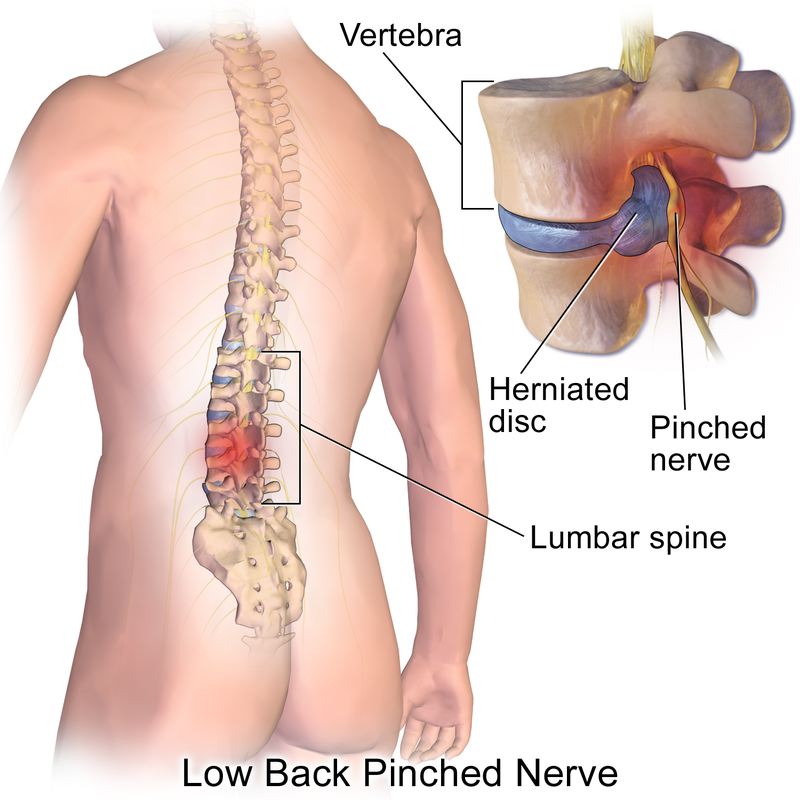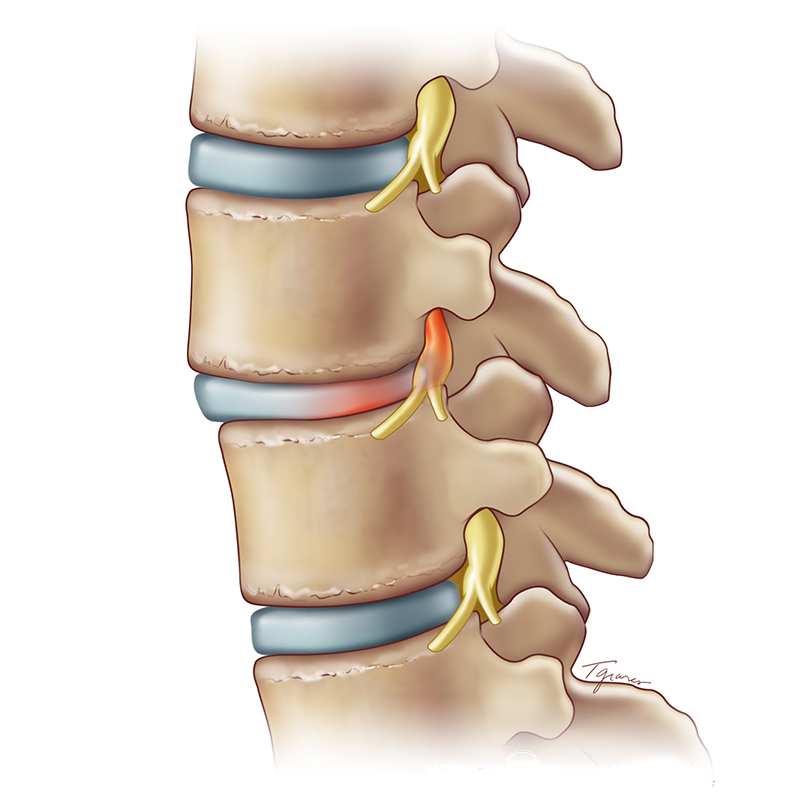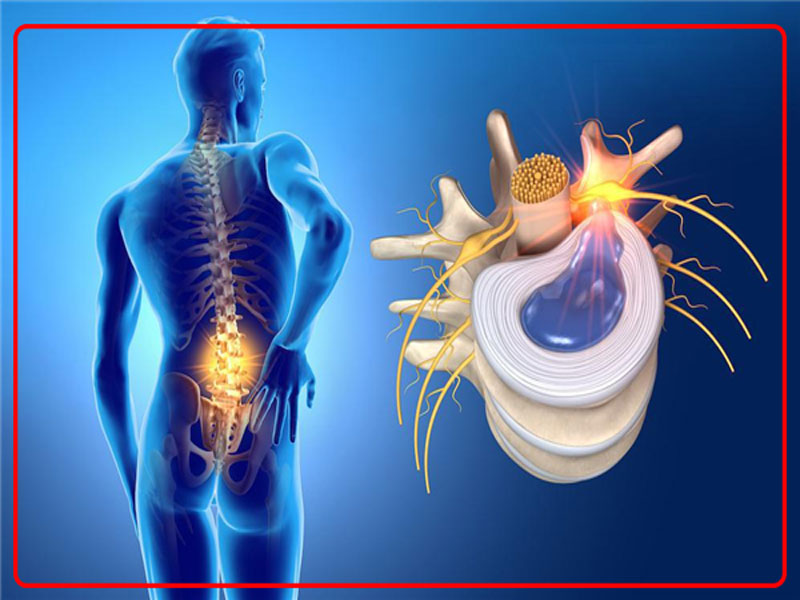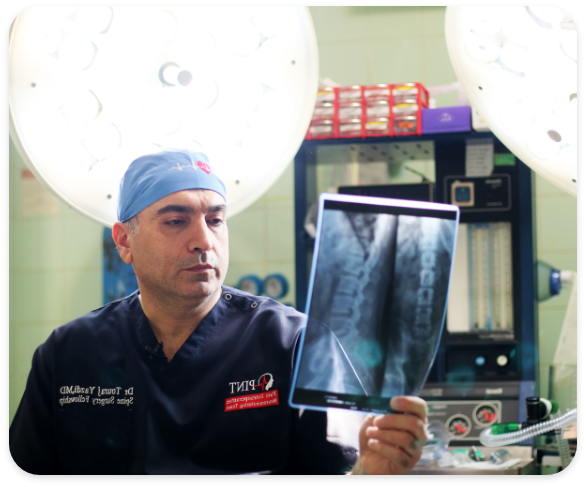The intervertebral disc is a cartilaginous structure that is located between the vertebrae. The vertebrae are in the shape of bony cubes. The discs absorb and neutralize the forces acting on the spine. The disc works just like a shock absorber. In other words, the disc changes the weight of the body, as well as the forces that enter the spine, are evenly and symmetrically between the vertebrae in the spine. The structure of the disc is generally made of fiber and cartilage, which is called fibrocartilage.
Lumbar disc rupture
Because the disk is a mechanical structure and is constantly moving, it suffers from wear and tears from the beginning of childhood. These changes cause back pain or diseases such as lumbar disc rupture, spinal stenosis, and spinal curvatures such as kyphosis and scoliosis.
The actual spine diseases, such as a ruptured disc, is not specific, but a mixture of genetic predisposition, old age, biomechanical changes, as well as environmental factors such as occupation and lifestyle are important in creating it.

Anatomy of the lumbar disc
The intervertebral disc is generally made up of three structures, one of which is the cartilaginous plates that line the top and bottom of the disc and attach the disc to the vertebrae of the vertebrae. The second structure is the disc nucleus, which is the nucleus pulposus, and the third structure is the disc ring around the nucleus, called the annulus fibrosus.
What is an intervertebral disc?
Intervertebral disc disease is a common complication that occurs as a result of injury or generation of one or more discs located between the lumbar vertebrae. This complication causes pain in the lower back, neck, arms, and legs. The intervertebral discs act as shock absorbers between the vertebrae and absorb the pressure on the spine.
During this complication, discs are usually pressed, which may be seen anywhere in the spine, and the discs in that area are destroyed. Depending on the location of the complication, the disease may cause chronic pain in the lower back. This pain usually gets worse when you sit, bend, spin, or lift objects.
Destroyed disks will also be at risk of hernia. This hernia can put pressure on the nerve roots coming out of the spinal cord and cause pain, weakness, and numbness. A disc herniation usually causes nerve pain called sciatica that will be felt along with sciatica. This nerve runs from the waist to the end of each leg.
With the destruction of the disc, bony spines form at the edges of the involved vertebrae. These bony spines can also put pressure on nerve roots and make them weak and numb. If a bone spur puts pressure on the spinal cord, the person may have problems walking and controlling the bladder and intestines. As the degenerated disc passes, it is destroyed and no space is left between the two vertebrae. This problem can cause movement disorders, pain, and nerve damage.
Prevalence
It is estimated that about 5% of people in advanced societies develop intervertebral disc disease. Most people develop disc degeneration with age, but the amount of damage and pain will vary from person to person.
Causes of the intervertebral disc
Genetics
Intervertebral disc disease is caused by a combination of environmental and genetic factors. Some of these factors are known but many are not. Researchers have identified several genes that contribute to intervertebral disc disease. The main genes involved in causing this disease are genes involved in the production of a protein called collagen. A collagen is a group of proteins that strengthen connective tissues such as skin, bone, cartilage, tendons, and ligaments. Collagen forms a network of fibers that give structure and stability to the intervertebral discs. It appears that some mutations in the genes involved in the production of this protein could affect the ability of collagens to bind to each other and contribute to intervertebral disc disease by reducing disc stability and making it vulnerable.
Some natural genes involved in the immune system also increase the risk of intervertebral disc disease. These genes stimulate the immune system to react when a foreign invader, such as a virus, enters the body. It is thought that these genes can also stimulate the immune response against discs and cause them to degenerate by inflammation and dehydration of discs.
Genes involved in the growth and health of discs and vertebrae can also be linked to intervertebral disc disease. Some mutations in these genes cause degeneration and disc herniation. Researchers are trying to identify other genes involved in the disease.

Inheritance
Intervertebral disc disease can be inherited but the pattern of transmission is unknown. People whose first-degree relatives (such as parents and siblings) have intervertebral disc disease are at higher risk for developing the disease. These people may inherit the genes involved in the disease but do not show symptoms. Not all people with intervertebral disc disease have the genes associated with the disease, and not all people with these genes get the disease.
Other factors
Non-genetic factors related to the incidence of this disease have also been studied. These factors include smoking, obesity, chronic inflammation, and prolonged driving.
Intervertebral disc treatment
After the examination, if your doctor suspects intervertebral disc disease and there is no other serious problem, treatment can be started immediately.
Lifestyle modification
Corrections can be made at home and work so that you can more easily cope with intervertebral disc disease. These include creating a healthy sleeping pattern, eating an anti-inflammatory diet, drinking enough water, avoiding nicotine, and using the appropriate chairs to maintain a healthy posture while sitting.
Over-the-counter medications for low back pain
The first standard treatment for low back pain is over-the-counter pain relievers such as acetaminophen, ibuprofen, and naproxen. Using topical creams or warm compresses can also be an effective way to relieve back pain. Like all medicines, over-the-counter pain relievers can have side effects, some of which are serious. These drugs should also be taken only under the supervision of a physician.
Sources
https://www.physio-pedia.com/Intervertebral_disc
https://medlineplus.gov/genetics/condition/intervertebral-disc-disease/
https://www.spine-health.com/glossary/intervertebral-disc
https://www.kenhub.com/en/library/anatomy/the-intervertebral-discs


